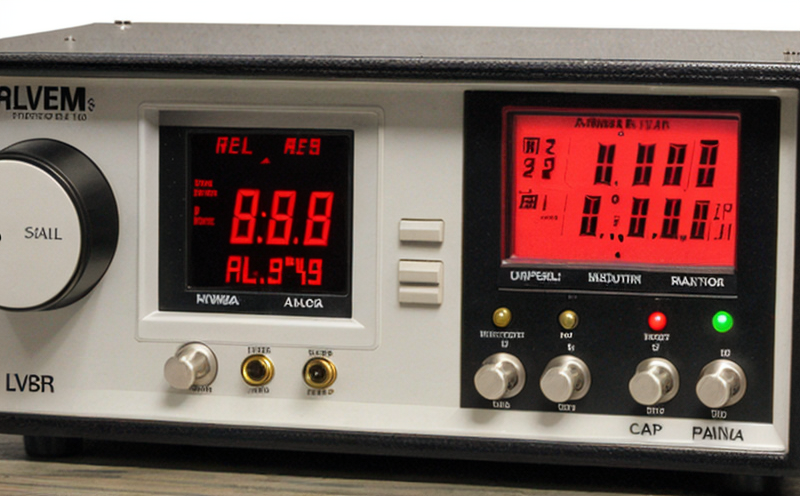ASTM E1708 Testing of Radiation Protection Instrumentation
The ASTM E1708 standard provides a method for testing and evaluating the performance characteristics of radiation protection instrumentation. This includes dosimeters, area monitors, and personal dosimeters used in various nuclear and industrial settings. The purpose is to ensure that these instruments provide accurate measurements under different environmental conditions.
ASTM E1708 is widely recognized as a benchmark for quality assurance in the measurement of ionizing radiation exposure. It covers a range of tests that are essential for the calibration, validation, and certification of radiation protection equipment. The test procedures are designed to simulate real-world scenarios, ensuring that instruments meet stringent performance criteria.
The testing process typically involves exposing the instrument to known levels of radiation and comparing the measured values against reference standards. This ensures that the instrument provides accurate readings under various conditions such as varying environmental factors like humidity and temperature.
One of the key aspects of ASTM E1708 is its emphasis on repeatability and reproducibility. The standard requires that instruments must provide consistent results over time, which is critical for maintaining compliance with regulatory requirements. This ensures that the data collected by these devices can be relied upon in decision-making processes.
The testing protocol outlined in ASTM E1708 includes a series of steps designed to assess different performance characteristics. These include linearity checks, stability assessments, and response tests. Each step is crucial for ensuring that the instrument operates correctly under various conditions.
Linearity checks are performed to ensure that the instrument provides accurate readings across a wide range of radiation levels. Stability assessments help determine whether the instrument maintains its accuracy over time, while response tests evaluate how quickly and accurately the instrument responds to changes in radiation exposure.
The results of ASTM E1708 testing are typically reported as compliance with specific performance criteria outlined in the standard. Compliance indicates that the instrument meets the necessary requirements for accurate measurement, which is essential for ensuring safety in nuclear and industrial settings.
It's important to note that ASTME1708 testing goes beyond mere calibration; it ensures that instruments are fit for purpose in real-world applications. This comprehensive approach helps maintain confidence in the accuracy of radiation protection instrumentation, thereby enhancing overall safety standards.
- Compliance with International Standards: ASTM E1708 aligns closely with international standards such as ISO 4022 and IEC 61526-1, ensuring that testing methods are consistent across different regions.
- Repeatability and Reproducibility: The standard emphasizes the importance of these two factors in maintaining accurate measurements over time.
- Variability Testing: This ensures that instruments can handle varying environmental conditions without compromising accuracy.
The ASTM E1708 testing process is vital for ensuring the reliability and accuracy of radiation protection instrumentation. By adhering to this standard, organizations can maintain compliance with regulatory requirements while enhancing overall safety in their operations.
Industry Applications
The ASTM E1708 testing protocol finds extensive application across various industries that deal with ionizing radiation. These include nuclear power plants, medical facilities, research laboratories, and industrial processes involving radioactive materials.
In the nuclear industry, accurate radiation measurement is crucial for ensuring safety during operations such as fuel handling and reactor maintenance. The testing ensures that dosimeters used by workers are reliable and provide accurate readings under all conditions encountered in these environments.
Medical facilities also rely heavily on ASTME1708-compliant instruments to monitor patient exposure during treatments like radiation therapy. Ensuring the accuracy of these devices is vital for both therapeutic efficacy and patient safety.
In research laboratories, ASTME1708 testing helps maintain consistent data collection across experiments involving radioactive materials. This consistency is critical for accurate scientific analysis and reproducibility.
For industrial processes that involve radioactive materials, such as in the production of nuclear fuel or waste management, ASTME1708 ensures that protective instruments are reliable and provide accurate measurements under all conditions.
The testing process also plays a significant role in ensuring compliance with relevant regulations. By adhering to ASTM E1708 standards, organizations can demonstrate their commitment to safety and quality in radiation protection instrumentation.
Why Choose This Test
Selecting ASTME1708 testing for your radiation protection instrumentation is a wise decision that offers several advantages. Firstly, it ensures compliance with international standards, which is essential for regulatory compliance and safety assurance. Secondly, the comprehensive nature of the test guarantees accurate and reliable measurements across different environments.
The testing process not only calibrates instruments but also evaluates their performance under various conditions, ensuring they meet stringent quality benchmarks. This thorough approach builds confidence in the accuracy and reliability of the instruments used in critical applications.
By choosing ASTME1708 testing, organizations demonstrate their commitment to maintaining high safety standards in radiation protection. The results of this testing can be used to make informed decisions about instrument selection, calibration, and maintenance, ultimately leading to safer operations.
The ASTM E1708 standard is recognized globally for its rigorous approach to testing radiation protection instrumentation. Its widespread acceptance among regulatory bodies and industry stakeholders makes it a reliable choice for ensuring compliance with international standards.





